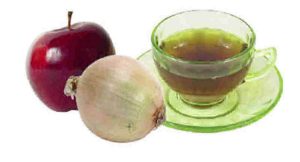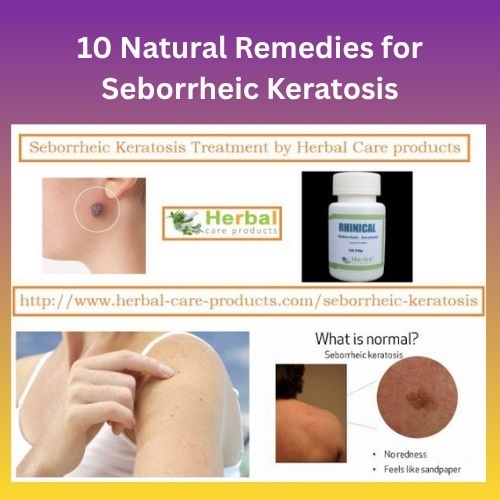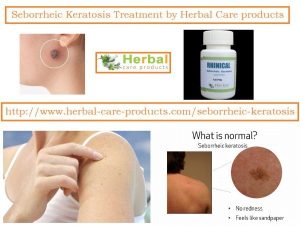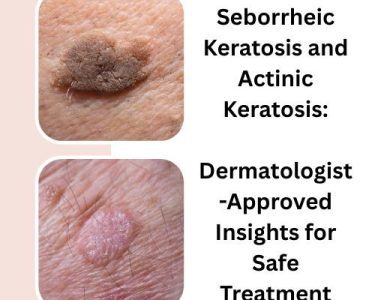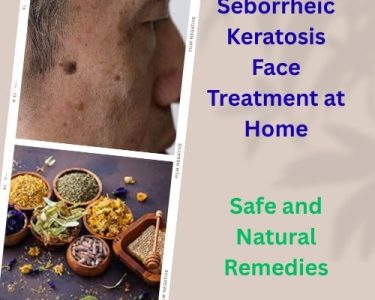Seborrheic Keratosis
Seborrheic keratosis is considered harmless mostly pigmented. It can be like a pale, brown growth on the back, shoulders, chest or face. It can appear in middle aged or older adults. It is not a dangerous disease. Seborrheic keratosis are not contagious, they do not spread or don not turn into tumors. This condition is mostly started after 40. Their sizes are varying from around one centimeter to several in diameter. They also run in families. The lesions appear anywhere on your body.
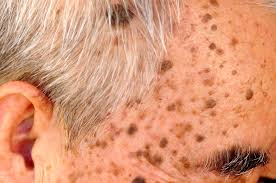
Natural Treatment for Seborrheic Keratosis
Natural Remedies for Seborrheic Keratosis
Seborrheic keratosis is a common, benign skin condition characterized by the appearance of brown, black, or tan growths that often have a waxy or scaly texture. While these growths are harmless, they can sometimes cause discomfort or cosmetic concerns. Many individuals seek natural remedies as an alternative to medical treatments like cryotherapy or surgical removal. Some popular natural approaches include the use of apple cider vinegar, which is believed to help dissolve the growths when applied topically over time. Aloe vera, with its soothing and anti-inflammatory properties, is also commonly used to alleviate irritation and promote healthy skin.
Another natural remedy often cited is the application of tea tree oil, known for its antifungal and antibacterial benefits, which may help reduce the size of seborrheic keratosis growths. Additionally, green tea extracts, rich in antioxidants, can be applied to the affected areas to support skin health and reduce oxidative stress. It’s important to note, however, that while home remedies for seborrheic keratosis may provide relief or gradual improvement, results can vary, and it’s always advisable to consult with a healthcare provider before starting any new treatment, especially for skin conditions.
10 Natural Remedies for Seborrheic Keratosis
Following are the some Natural Remedies for Seborrheic Keratosis given below.
Honey and Water
You have to apply honey water to affected areas and for 3 hours (leaving it on). Once the +3 hours are up you simply wash the honey off.
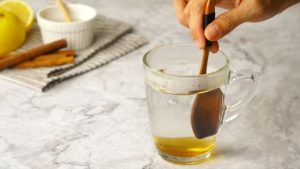
Coconut Oil
Coconut oil is a popular seborrheic keratosis home remedy due to its natural moisturizing and anti-inflammatory properties. Applying virgin coconut oil directly to the affected area may help soften the rough, raised texture of seborrheic keratosis and reduce irritation. While it may not remove the growths entirely, consistent use can support skin health and ease discomfort. Many people prefer coconut oil as a gentle, chemical-free option when exploring natural treatments at home.
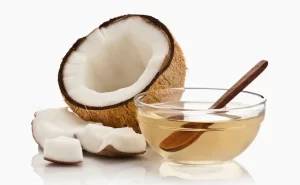
Apple Cider Vinegar
Seborrheic keratosis apple cider vinegar treatment has gained popularity as a simple home remedy for managing these benign skin growths. Many people believe that applying diluted apple cider vinegar on seborrheic keratosis can help soften and gradually reduce the raised texture over time. The natural acidity of apple cider vinegar seborrheic keratosis applications is thought to exfoliate dead skin cells and promote a smoother appearance. While anecdotal reports suggest mild improvements, it’s important to remember that this method may not work for everyone and should be used cautiously to avoid skin irritation. Consulting a dermatologist before trying such remedies is always recommended.

Baking Soda
Baking soda is often considered a simple home remedy for seborrheic keratosis due to its exfoliating and pH-balancing properties. When mixed with a small amount of water to form a paste and applied to the growth, it may help gently slough off dead skin cells and reduce the appearance of these benign skin lesions over time. While there’s limited scientific evidence supporting its effectiveness, many people use baking soda as a natural approach to managing seborrheic keratosis at home. However, it’s important to use it cautiously and consult a dermatologist for proper diagnosis and treatment options.
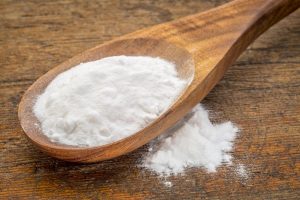
Tea Tree Oil Shampoo
Tea tree oil shampoo is gaining attention as a gentle Seborrheic Keratosis Home Treatment, offering natural support for skin health. Known for its antifungal and soothing properties, seborrheic keratosis tea tree oil may help reduce irritation and keep the affected areas clean, though it doesn’t remove growths entirely. Regular use of a mild tea tree oil shampoo can complement your skincare routine by maintaining a healthy scalp and skin environment, potentially easing discomfort associated with these benign lesions. However, it’s important to remember that tea tree oil works best as a supportive remedy and should be used alongside professional advice for managing seborrheic keratosis.
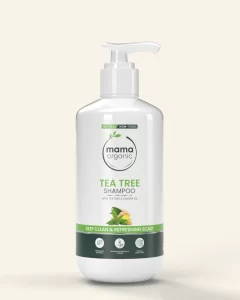
Stay Hydrated
Drinking plenty of water whole the day. Avoid salty food and alcohol, which can aggravate and dry out the skin, instead having things like coconut water, green tea,

Aloe Vera gel
Aloe vera which is the best Natural Remedies for Seborrheic Keratosis which can help fade liver spots on the face and hands. This moisturizing agent can be adding to your daily skin care routine for diminish and lighten the spots.
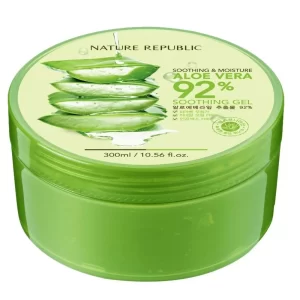
Castor Oil
Castor oil is one of the most popular essential oils for seborrheic keratosis, known for its anti-inflammatory and moisturizing properties that may help soften and reduce the appearance of these benign skin growths. Apply the oil all over cleansed face for 15 to 20 minutes to not just fade brown spots but also diminish appearance of fines lines, worry creases and premature wrinkles, promoting gradual exfoliation and soothing irritation without harsh chemicals. Its natural ricinoleic acid content helps in breaking down excess keratin buildup, which is often associated with seborrheic keratosis. For best results, gently massage a few drops of castor oil onto the lesion twice daily and allow it to absorb fully into the skin.
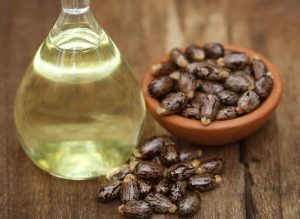
Potato juice
Potato juice is gaining popularity as a gentle home treatment for seborrheic keratosis due to its natural bleaching and anti-inflammatory properties. Applying fresh potato juice directly to the affected area may help lighten the appearance of these benign skin growths over time. The enzymes and antioxidants in potatoes are believed to support skin regeneration, making them a safe and cost-effective option for those seeking natural remedies. While results may vary, consistent use of potato juice as a topical application can be a soothing and accessible part of a holistic skin care routine.
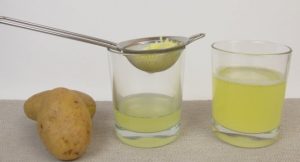
Onion juice and Apple cider vinegar
It is a powerful folk remedy for spot removal. Mix onion juice (grate the onion to collect the juice) with a teaspoon of organic unfiltered Apple cider vinegar in equal ratio and apply the mixture using clean cotton swabs to the age spots on face. Try these least 6 to 8 weeks.
